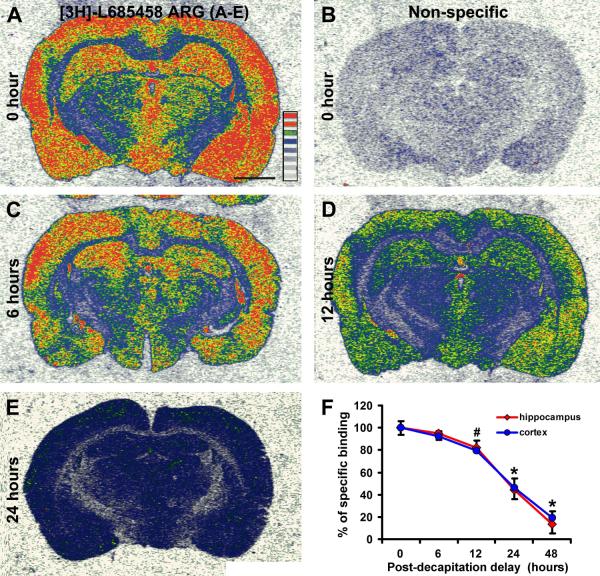Fig. 1.
Characterization of the effect of delayed brain removal/freezing on [3H]-L-685,458 binding sites in the rat cerebral cortex. Panels (A) and (B) show the total and non-specific radioligand binding in the cortex and hippocampal formation in a fresh frozen brain. Panels (C-E) show reduced radioligand binding density in batch-processed brains removed/frozen 6, 12 and 24 hrs after decapitation. Panel (F) shows a decline in specific binding density (mean ± S.D.) in the parietotemporal cortex and hippocampal formation in the brains collected/frozen 6 to 48 hrs after decapitation, relative to fresh-frozen control (i.e., 0 hr delay, defined as 100%). Scale bar = 200 :m in (A) applying to all image panels.

